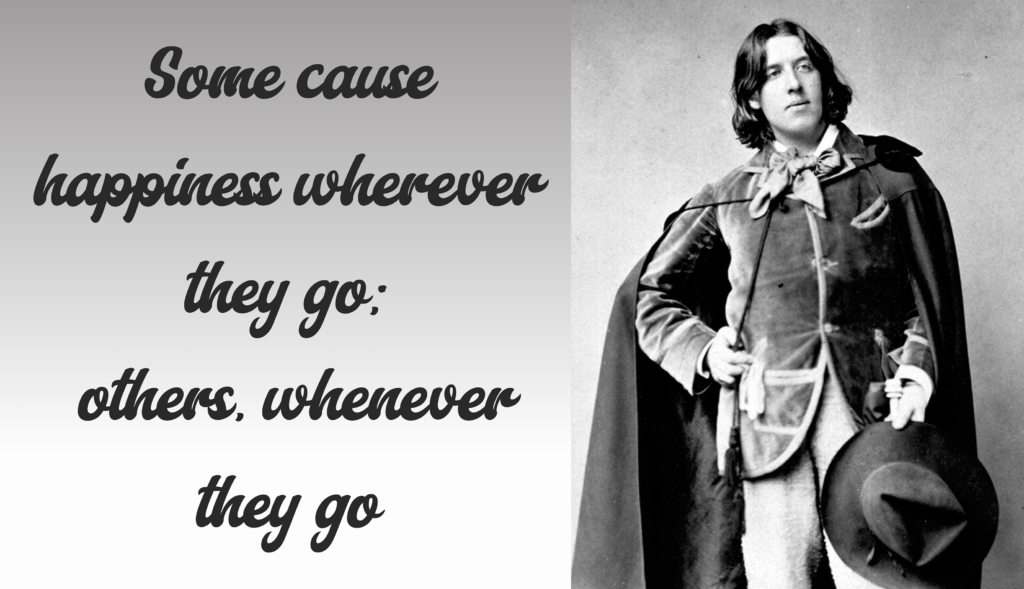Sarcasm, the cheeky cousin of humor, often gets a reputation for being mean-spirited or cynical. But, what if we told you it doesn’t have to be that way? In fact, when wielded with precision and a bit of flair, sarcasm can uplift rather than tear down. It can help us take life’s absurdities a little less seriously while still keeping things light. Think of it as verbal judo—using humor’s natural momentum to turn seriousness into laughter.
Sarcasm, when done right, is about dodging the punchline that cuts too deep and delivering one that invites others to laugh with you, not at you. There’s a certain joy in seeing the world through a lens that’s both detached and deeply empathetic at the same time. It’s a fine art, balancing wit with warmth, and it’s something we could all benefit from mastering.
But where’s the line between sarcasm as a humorous shield against life’s troubles and sarcasm as a tool for cynicism and bitterness? How do we recognize when it’s too sharp, and more importantly, how do we make sure we’re not using it to hide our own insecurities? Let’s explore the playful side of sarcasm, the one that can make a room full of strangers chuckle rather than feel insulted. We’ll even dive into the psychological quirk that explains why some people simply don’t get it.

The Art of Sarcasm: When Humor Meets Honesty
Sarcasm isn’t just about getting a laugh. It can also be a powerful way to deliver hard truths, making it one of the most effective tools for challenging social norms without coming across as preachy. It allows us to point out the absurdities, contradictions, or injustices in society while keeping things light and entertaining.
Consider how sarcasm has been used historically in satire, from writers like Jonathan Swift to comedians today who tackle heavy topics with humor. When someone says, “Oh, because clearly that’s the best solution,” they’re not just making a joke—they’re subtly pointing out that the proposed solution is anything but ideal. Sarcasm provides a veil, a way to critique without directly attacking, which can sometimes make people more receptive to hearing tough truths. The humor diffuses the tension, making it easier for people to listen, reflect, and even laugh at their own inconsistencies.
Sarcasm can challenge the status quo in ways that other forms of communication can’t. Take, for example, late-night talk shows that use sarcasm to dissect politics or social issues. They point out hypocrisies or absurdities in a way that’s both entertaining and thought-provoking. By delivering these critiques wrapped in humor, the message becomes more digestible—and often more impactful. It’s easier to laugh at a sarcastic comment about a flawed system than to sit through a dry, moralizing speech.
And let’s be honest, sarcasm can cut through the noise. In a world where everyone seems to have an opinion, sarcasm stands out because it doesn’t just state the facts; it reframes them in a way that feels fresh and engaging. It forces you to look at the world from a different angle, to recognize the gap between what we say and what we really mean. In doing so, it encourages critical thinking, all while keeping the mood light.
So yes, sarcasm is funny, but it’s also a sneaky, effective way to make people think. It can challenge societal norms, provoke thought, and invite change—all while keeping everyone entertained.
The Wit Behind Sarcasm: Lighten Up, Don’t Tear Down
When sarcasm is at its best, it walks the tightrope of wit, balancing between clever observation and a cheeky jab. It’s less about what’s said, and more about the delivery. That dry, deadpan tone? That’s sarcasm’s secret weapon. A perfectly timed sarcastic quip can lighten the tension in a room or break up the monotony of a conversation that’s veering into Serious Land.
Let’s break down the ingredients of good sarcasm. First, there’s context. The best sarcastic comments usually come when everyone’s on the same page—think inside jokes or shared experiences. Then, there’s timing. Just like a good punchline, sarcasm thrives on being quick, but not rushed. Finally, there’s tone. Get that wrong, and you’ve crossed into dangerous territory: insult. But nail it, and you’ll have delivered a line that makes everyone think, “Ah, you got me.”
In short, sarcasm isn’t about being mean. It’s about poking fun at the ridiculousness of life, without making someone feel like they’re the punchline. The aim? To give people a chance to laugh, not at their expense, but alongside you.
The Psychology of Sarcasm: Why Some People Don’t Get It
Aaah, that dreaded moment when your sarcasm flies over someone’s head like a bird that simply refuses to land. We’ve all been there. You drop a perfectly crafted sarcastic comment, only for the other person to blink at you in confusion. What’s going on here? Why doesn’t everyone have the sarcasm radar turned on?
To understand this, we need to dive into the psychological mechanics at play. Sarcasm, by definition, is saying the opposite of what you mean. For most people, the mind performs a kind of mental gymnastics to figure out that you’re not being literal. It requires a bit of cognitive processing to recognize that what was said is, in fact, a joke. Those with a keen sense of humor have no problem making this leap. But for others, especially those on the autism spectrum or who experience social anxiety, sarcasm can be as confusing as trying to decode an alien language.
Research has shown that detecting sarcasm taps into several parts of the brain at once. There’s the prefrontal cortex, which handles complex thinking, and the right hemisphere, which helps interpret tone and context. If someone’s brain is wired a little differently, sarcasm may not land with the same clarity.
But here’s the thing: it’s not that these people don’t have a sense of humor. It’s just that sarcasm, with all its subtleties and nuances, may not be their preferred flavor of funny. And that’s okay. Sarcasm is just one form of humor—one that not everyone is equipped to catch.
Wit vs. Insult: Walking the Line Between Humor and Harm
Sarcasm is a double-edged sword. While it can be light, playful, and downright hilarious, it also has the potential to hurt when not handled with care. The problem often lies in the intention behind the words. Are you trying to make someone laugh, or are you masking a barb with humor?
The line between wit and insult is thinner than we might think. What’s funny to one person might feel like a personal attack to someone else. This is where context and empathy come in. Knowing your audience is half the battle. Sarcasm among close friends who understand each other’s humor? Probably safe ground. Sarcasm with someone you just met? Maybe pump the brakes.
But even when wielded among friends, sarcasm can sometimes hit harder than intended. This is because sarcasm often points out an uncomfortable truth, albeit in a humorous way. And if that truth is a bit too raw or fresh, it can sting. That’s why a good rule of thumb is to aim for situations, not people. Laughing at life’s absurdities is a lot safer than laughing at someone else’s expense.
Sarcasm and Positivity: Finding Light in the Absurd
So, is there really a place for sarcasm in a world that often feels overwhelmingly serious? Absolutely. In fact, sarcasm can be a powerful tool for finding humor in the darkest of places. By pointing out the ridiculousness of life’s challenges, it allows us to take a step back and laugh, even when things seem dire.
Think about it: in times of stress or hardship, sarcasm can offer a much-needed release. It lets us mock the chaos without feeling overwhelmed by it. Sarcasm, when handled with care, can be a way to bond with others over shared struggles, making light of our collective experiences. It creates a space where we can laugh, not out of despair, but out of the sheer absurdity of it all.
Take for example, someone dealing with a tough day at work. Instead of wallowing in frustration, a sarcastic “Oh, yeah, because that totally makes sense” can shift the mood. It’s a way of acknowledging the struggle without letting it consume you.
In this way, sarcasm can actually foster positivity. It teaches us not to take everything too seriously and to find the humor in even the most challenging situations. When used with the right intent, sarcasm becomes a form of resilience—a way to bounce back from life’s little absurdities with a smile.

The Misinterpretation Factor: When Sarcasm Goes Awry
As much as we might love sarcasm, it’s not always an easy sell. The unfortunate reality is that sarcasm can be easily misunderstood, and when that happens, the joke falls flat—or worse, it causes unintended hurt.
The main culprit? Tone. Sarcasm relies heavily on vocal inflection, facial expressions, and body language. When we’re communicating in person, these cues help others realize that we’re joking. But in written form or when tone isn’t clear, sarcasm can come across as harsh or even mean-spirited.
To minimize misinterpretation, it’s always worth considering whether the situation is ripe for sarcasm. Is the person you’re speaking to in on the joke? Are they likely to understand that you’re being playful, not hurtful? If there’s even a sliver of doubt, it might be better to hold off or find another form of humor.
At the end of the day, sarcasm is meant to bring joy, not discomfort. Like all forms of communication, it requires a little self-awareness and empathy to get it just right.
Takeaways:
Sarcasm, when done right, can foster positivity and help people laugh at life’s absurdities.
There’s a fine line between wit and insult—sarcasm should aim to uplift, not harm.
Misunderstandings happen—sarcasm isn’t for everyone, and that’s okay.
External Links:
Psychology Today: Behind the Scenes of Sarcasm
How Do We Understand Sarcasm? Penny Pexman, Western University

